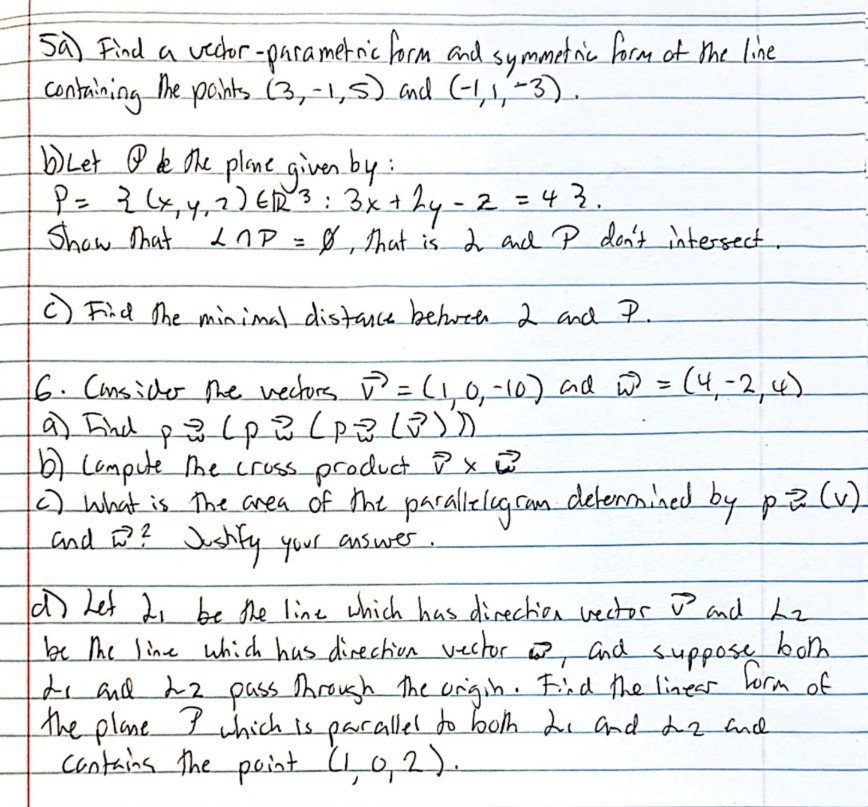Find a vector parametric form and symmetric form, find minimal distance betwen L and P, consider vectors v and w.
Answer
Answers can only be viewed under the following conditions:
- The questioner was satisfied with and accepted the answer, or
- The answer was evaluated as being 100% correct by the judge.
1 Attachment
1.7K
The answer is accepted.
Join Matchmaticians Affiliate Marketing
Program to earn up to a 50% commission on every question that your affiliated users ask or answer.
- answered
- 1807 views
- $100.00
Related Questions
- Find eigenvalues and eigenvectors of $\begin{pmatrix} -3 & 0 & 2 \\ 1 &-1 &0\\ -2 & -1& 0 \end{pmatrix} $
- [Rotations in R^3 ] Consider R∶ R^3 → R^3 the linear transformation that rotates π/3 around the z-axis
- Let $\mathbb{C} ^{2} $ a complex vector space over $\mathbb{C} $ . Find a complex subspace unidimensional $M$ $\subset \mathbb{C} ^{2} $ such that $\mathbb{C} ^{2} \cap M =\left \{ 0 \right \} $
- Length of a matrix module
- Diagonal and Similar Matrices
- Multivariable Calc: Vector equations, parametric equations, points of intersection
- [ eigenvalues and eigenvectors] Prove that (v1, v2, v3) is a basis of R^3
- Space of all matrices with given column space



By P w (v), you mean the projection of v on the line spanned by w?
Or the projection on the orthogonal space?
Yes the projection of v onto w.
Are you sure? This is a bit odd, as then the parallelogram would have area 0. The alternative makes more sense to me. Is there a definition you have on your notes or anywhere else?
I uploaded a file of some definitions I have, I'm not sure which one you would need.
Ok, that is indeed the projection onto w. This is odd, but it is what it is.
Do whichever you think is correct, I trust you. But also please keep your solution simple, I'm very much a beginner.
The area of the parallelogram determined by ⃗ v, ⃗ w ∈ R3 is ∥⃗ v × ⃗ w∥. I also found this definition.
Yes I know, but the text is asking for the area determined by Pw(v) and w. These two are parallel, so the area is 0.
I'll write both out in case there is an error in the text.
thank you so much, I really appreciate it.